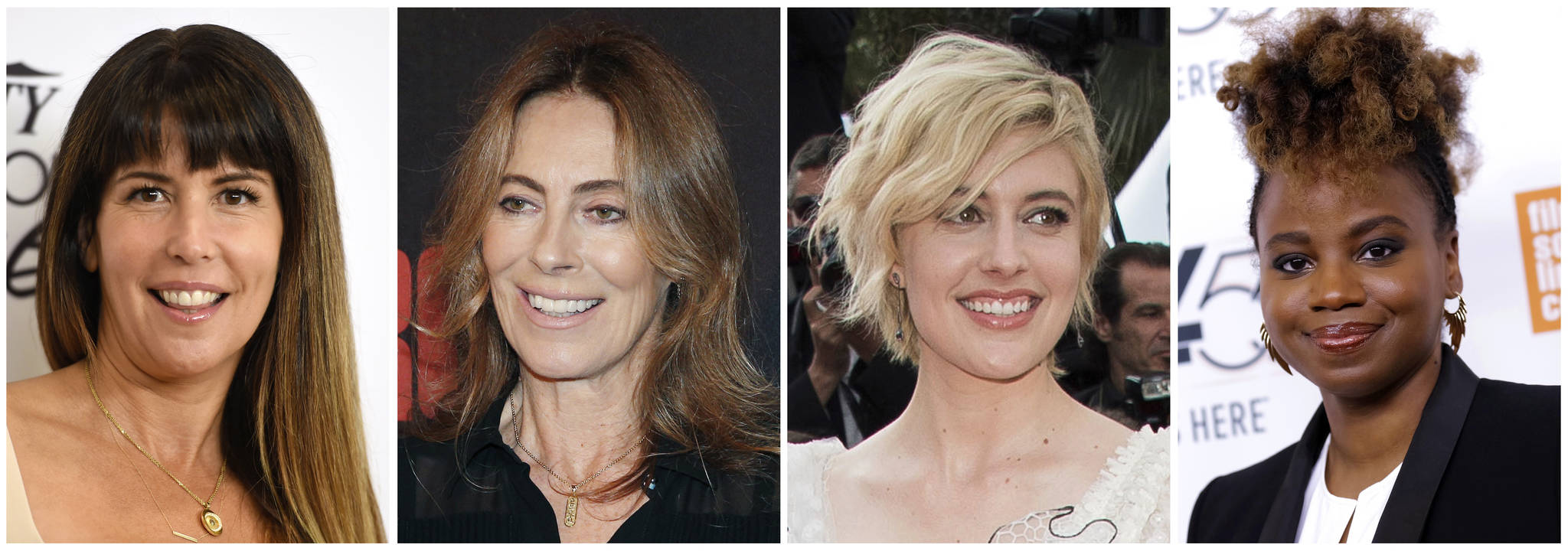By JAKE COYLE
AP Film Writer
NEW YORK — Four.
It’s one of the most glaring numbers in Academy Awards history. That’s how many women have been nominated for best director in the awards’ 89 years of existence. Kathryn Bigelow, for “The Hurt Locker” in 2010, is the only woman to win.
“I have to say it really bums me out,” says Greta Gerwig, whose solo directorial debut, “Lady Bird,” opened last week in limited release. “Every year I see the list of people who are in the running for best director. Kathryn Bigelow got in — that’s one. Every year they nominate five guys. Every year. And four women have been nominated in the history of the Academy Awards. That’s ridiculous. And it pisses me off.”
This year, those lists may be different — or, at least, it will be especially confounding if they aren’t.
Gerwig’s sharply observed coming-of-age tale “Lady Bird,” for one, is among the most acclaimed films of the year. Patty Jenkins’ summer sensation “Wonder Woman” was a runaway hit with both audiences and critics. Next week, Dee Rees will release her Sundance Film Festival hit, the Mississippi period drama “Mudbound.” Handicapping for March’s Academy Awards is early, but each — particularly Gerwig and “Lady Bird” — is considered among the possible nominees for best picture and for best director.
While Hollywood has been overrun with the Harvey Weinstein scandal and the harsh light it has thrown on widespread gender imbalances throughout the industry, movie screens nationwide have been aglow with ambitious films by female directors who are beating the odds stacked against them.
Oscar nominations won’t change the overwhelming maleness of the industry, where greenlighting executives, top agents and academy members (despite recent efforts to reshape membership) remain overwhelmingly male. The discrepancy is particularly pronounced behind the camera, where women comprised only seven percent of directors on the 250 highest-grossing domestic releases in 2016, according to an annual study by the Center for the Study of Women in Television and Film at San Diego State University. That’s two percentage points less than in 1998.
But as the “OscarsSoWhite” protest of recent years has shown, the Academy Awards can throw a spotlight on wider industry inequality.
“The severe gender imbalance strikes me as a source of considerable potential embarrassment for the academy,” said film professor Martha Lauzen, author of the San Diego State study. “Typically, a few high-profile individuals can skew our perceptions about how members of a certain group are faring but result in little, if any, substantial change. This year could prove to be unique in that nerves regarding this issue are raw.”
Long before hundreds of women began coming forward with allegations of sexual harassment and assault against Weinstein, director James Toback, producer Brett Ratner and many others, 2017 has been a movie year in many ways defined by female filmmakers. Bigelow, who thought her Oscar win would lead to some industry change, released her powerful race riot docudrama “Detroit.” Sofia Coppola, one of the four ever nominees (Lina Wertmuller and Jane Campion are the others), became just the second woman to win the directing prize at the Cannes Film Festival (another cinema institution with a poor track record of gender balance) for her point-of-view-flipping Civil War drama “The Beguiled.”
But there have been many more, too, including the astonishing festival selection “The Rider” by Chloe Zhao (Sony Pictures Classics will release it next year), Angelina Jolie’s intimate Cambodian genocide drama (Cambodia’s Oscar submission), Rebecca Miller’s tender documentary of her father, the playwright Arthur Miller (set to air next year) and Angela Robinson’s Wonder Woman origin story “Professor Marston and the Wonder Women.” It’s worth noting that both “Detroit” and “Professor Marston” were released by Megan Ellison’s Annapurna Pictures, one of the few female-led powerhouse production companies in Hollywood.
Robinson, noting the record-setting box office for Jenkins’ “Wonder Woman” (its $821.8 million worldwide gross is the most for a movie directed by a woman) has felt a hint of change is in the air.
“I do feel like there’s some give. Usually I feel like I’m banging against a rock wall,” says Robinson. “I do feel that there is a kind of energy and a kind of galvanizing anger happening that’s demanding that there be more representation of voices.”
Rees, whose breakout film “Pariah” was about a 17-year-old lesbian African-American woman coming to terms with her identity, believes awareness for gender imbalance in the industry has increased but the day-to-day reality is still very much “a work in progress.”
“Until it’s a non-story, you know we’re not there yet,” said Rees.
It’s especially fitting that this year has also brought a new film from 89-year-old Agnes Varda, the Belgian-born filmmaking legend who was one of the leading directors of the French New Wave. Her road-trip odyssey “Faces Places,” co-directed with the street artist JR, took Cannes’ documentary award, and it has since ranked among the most celebrated movies of the year.
Varda, who will be given an honorary Oscar at this Saturday’s Governors Awards, has long been an inspirational figure to generations of female filmmakers who have come after her. “The Queen,” Gerwig calls her.
“I hear that. I love that,” says Varda. “I say: Be inspired by me about cinema, not because I’m a woman. Try to be radical. Try to be daring. Don’t make the prototype. I’ve tried different things, different styles, trying to investigate what cinema can do. I try each time to say: Can I still learn something from images and sound? So I get very excited about being a filmmaker.”

